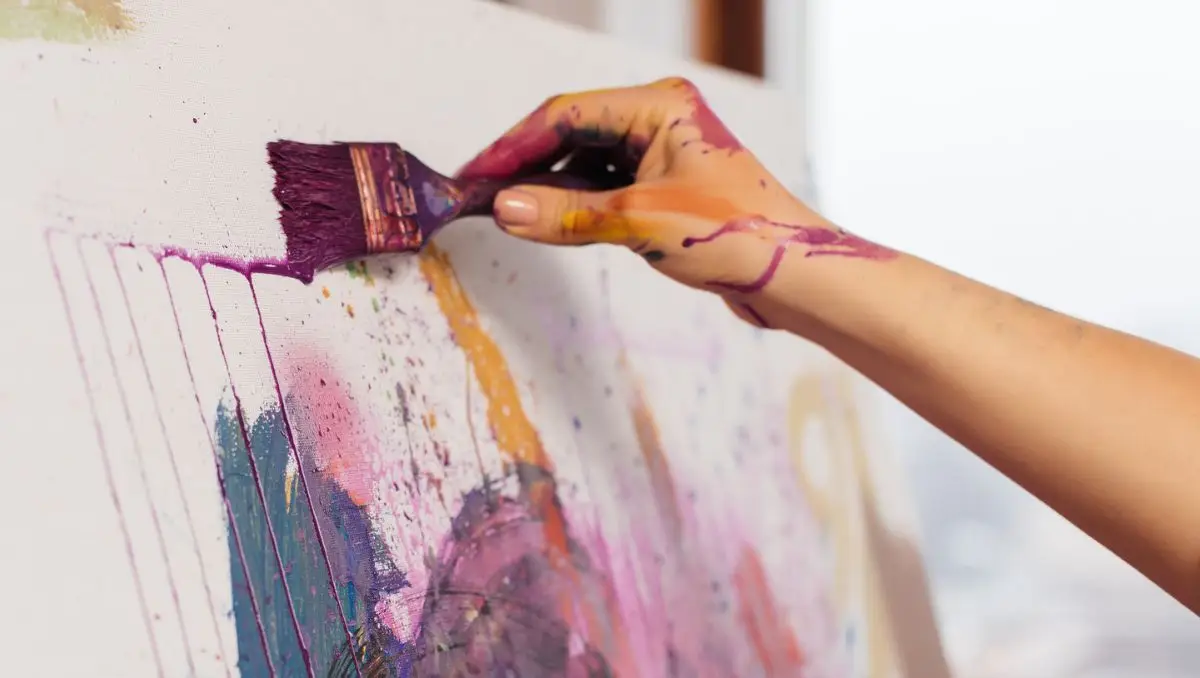Do you want to know the mauve color meaning or what color it is?
Are you curious about what colors go with mauve?
Mauve has a surprising amount of historical significance, going so far as having a decade named after it. The color has been making a resurgence, especially in fashion, and has many uses today.
We’ll be going through the different meanings of mauve, great color combinations, and its fascinating history. So, let’s get started.
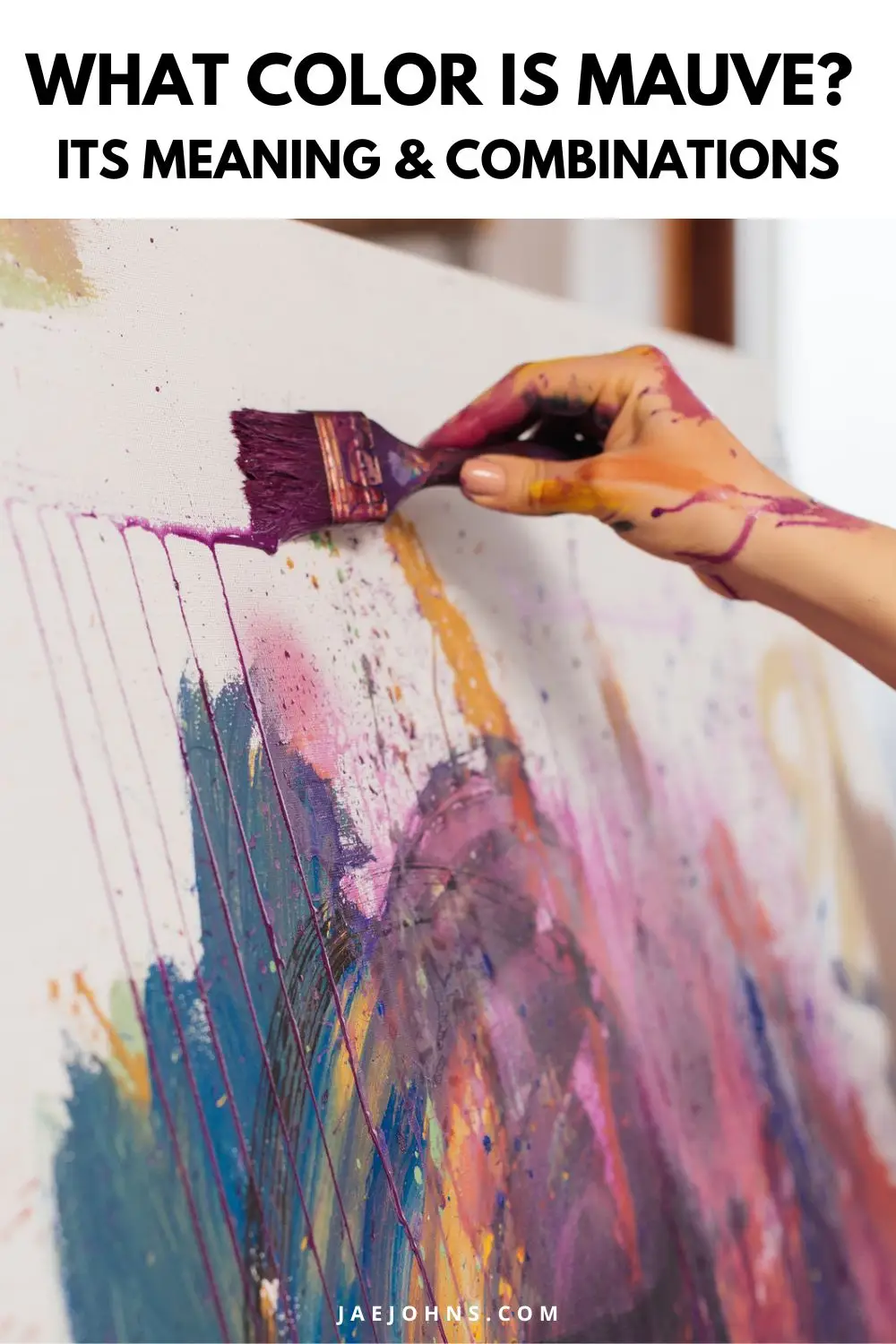
What Color Is Mauve?
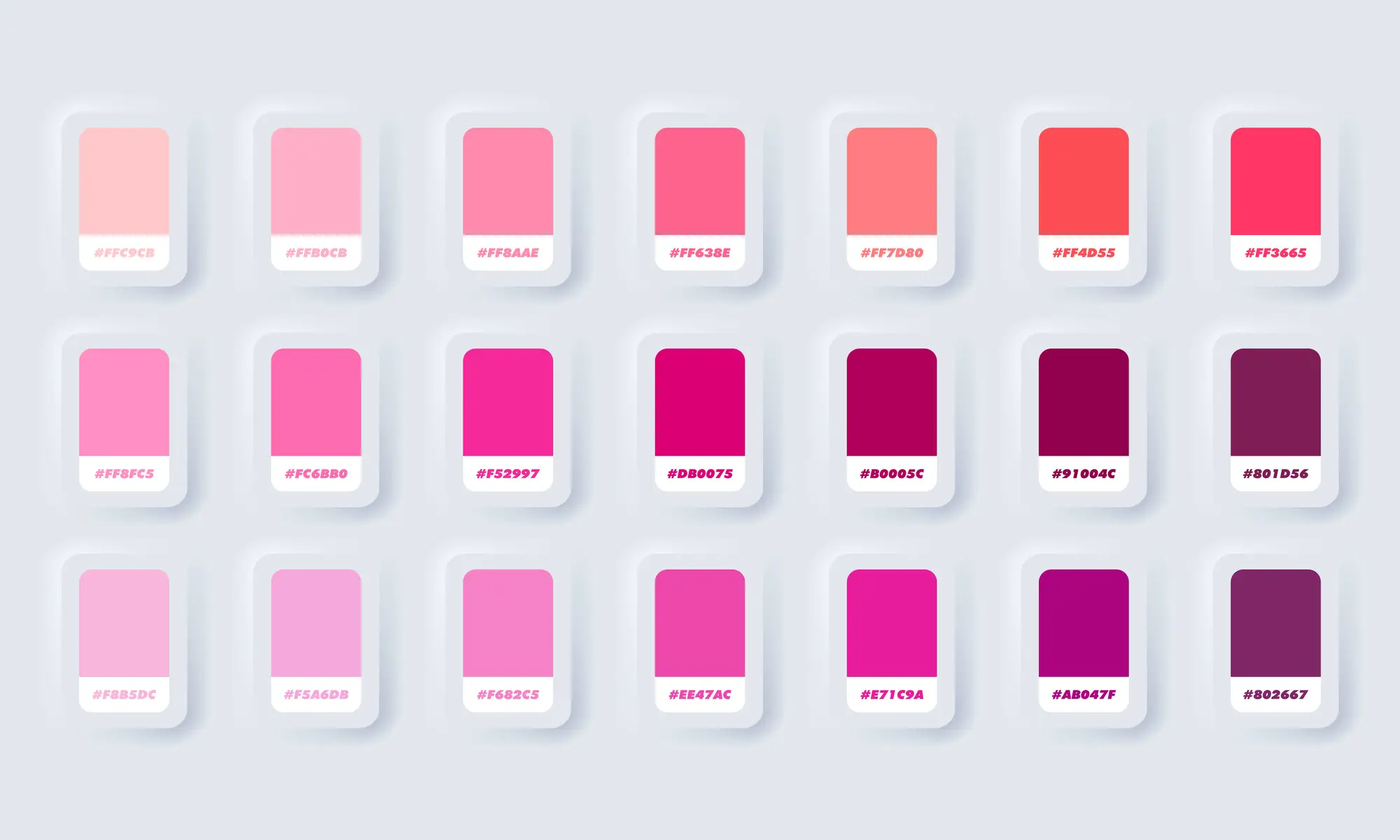
Mauve is a pale purple, between violet and red.
It is named after the mallow flower, called mauve in French.
Even in English-speaking countries today, mauve is the more popular name.
Mauve became a named color in the 1700s, revolutionizing the world of painting by providing a purple that wasn’t extremely expensive to obtain.
The color is bluer than magenta but redder than a violet color.
Mauve is more grey and blue than one might expect from a pinkish violet.
This is because many bluish wildflowers get called mauve, so the color is associated with a wide range of colors.
Mauve has been associated with youth, femininity, and decadence.
People who choose it as a favorite color tend to be romantic and creative.
Sometimes, they are seen as too dreamy and in their own heads.
However, the color is common in fashion and cosmetics, with most people encountering it fairly often.
It’s especially popular for weddings and sentimental occasions, as it evokes nostalgia.
Mauve Color Names
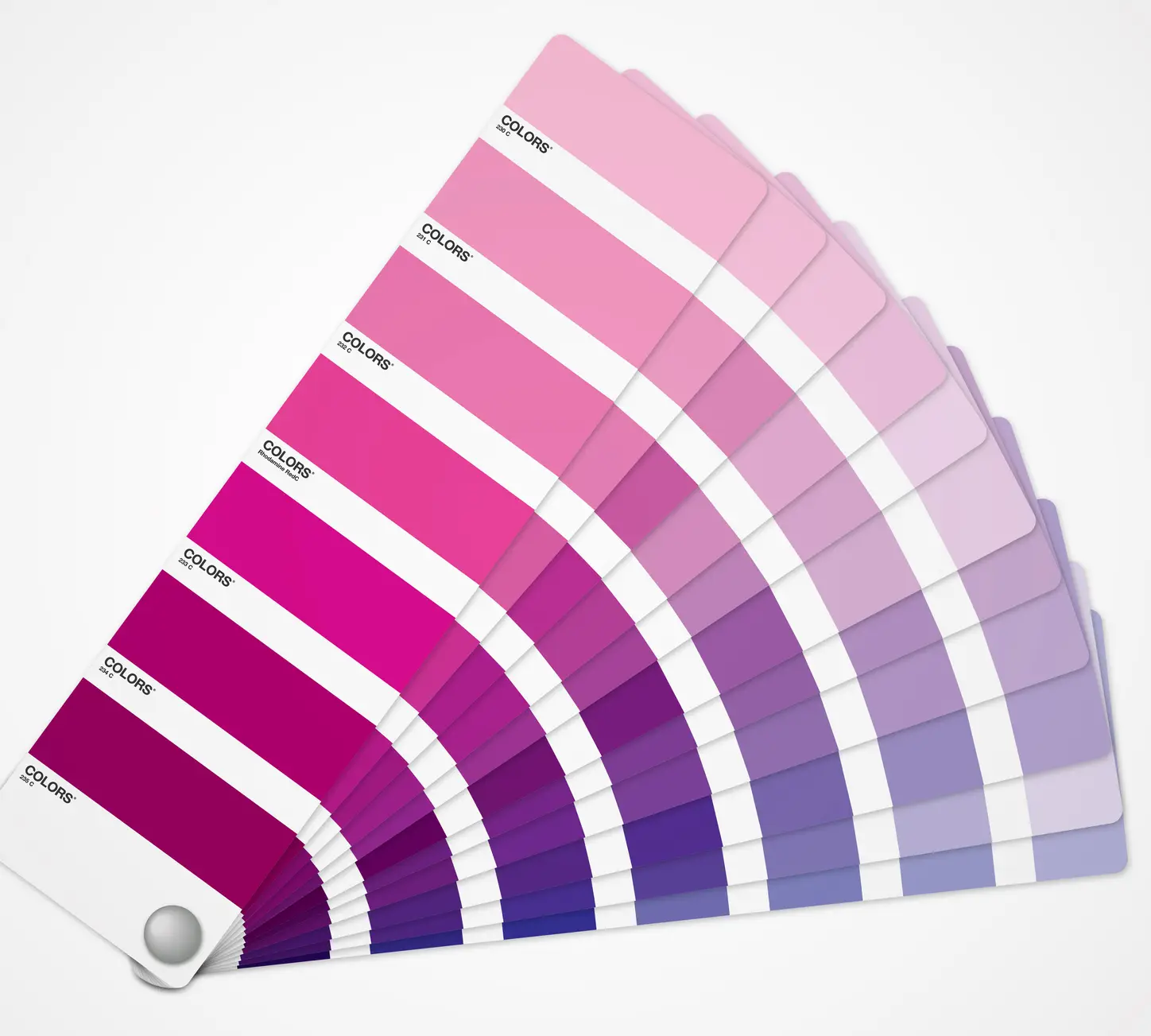
There are many color names clustered around the color mauve.
Mauve itself comes from the French name for the mallow flower, but around it are violet, orchid, lavender, and lilac, all different names for famous flowers.
Other purple colors include plum and indigo, which are rich purples.
What makes mauve unique compared to other purples is twofold.
First, it is a fairly pale shade of violet, and second, reddish or pinkish in tint.
When considering just these factors, lavender and lilac are similarly pale but lack as much pink.
Fushia and magenta are more pink than mauve, and mauve lies between them and violet on the color wheel.
Pink mauve, heather mauve, and dusty mauve are all popular variations on the color, to name just a few.
Mauve Color History

Until the 1850s, pigments, and dyes were made using plant materials.
However, such dyes were inconsistent, fading quickly with washes.
Mauve is an incredible color in terms of the history of dyes and pigments.
In 1856, the chemist William Henry Perkin was trying to invent a cure for malaria but instead created a synthetic dye the color of mauve.
This allowed him to make the first mass-produced dye ever formulated, called mauveine.
The fact that it was such a rare and unusual shade completely changed fashion within just a few decades, becoming exceptionally popular in the 1890s, the so-called “Mauve Decade.”
Alexandra Feodorovna, the last Empress of Russia, actually had a legendary mauve room in her Romanov palace.
The fact that purple was previously associated only with royalty due to its extreme rarity became a massive shift in what was possible in fashion.
Garments from the best fashion houses of Paris and London started using mauve extensively, and it sold well.
The color was in vogue even amongst royalty, with Queen Victoria and Empress Eugenie both celebrating the new dye.
In addition, the dye gave a huge boost to the chemical industry in general.
It was commercially successful and found vital applications in the medical field.
The dye could be used to color cells and study chromosomes, which allowed for much clearer visuals of what was happening.
This eventually led to the discovery of what causes tuberculosis and chemotherapy treatment.
Mauve Color Meaning

The great popularity of mauve garments in the 1890s changed the face of the color forever.
No longer just a color for royalty, mauve remains a color of luster and taste.
That said, there is a twinge of nostalgia and a time gone by with mauve.
It had such meaning for royalty, knights, and medieval ideals that the color is still associated with the past.
Even its resurgence comes almost a century ago now.
Still, it is used often in interior design and wedding planning today, a bright, feminine color that goes brilliantly with white.
As for its psychology, mauve is often associated with the mind, artistry, and effort elegance.
As with purple, mauve is the color of eclectics, visionaries, and unique individuals.
More specifically, mauve is the color of abstract, pie-in-the-sky thinkers.
They believe in innovation above all else, entertaining almost any new idea.
They often hold unusual beliefs just to try them out and feel different.
Often, they are advocates of self-love and self-care.
Mauve-lovers tend to find society exhausting and are willing to invest in themselves when the world is cruel.
They are guided by their intuitions, feeling out what a good direction to go in would be, like a sixth sense.
Surprisingly, they are also highly sensitive and caring about others, although they often internalize this instinct.
Their best care instinct is non-judgment, always willing to hear others out and not get offended.
They can offer a great well of understanding and reassurance.
Finally, mauve is associated with spiritual thinking, believing there is always more to life to uncover and motivate us.
There’s never just one correct answer, but a deep spring will always continue in its diversity.
Mauve Color Theory
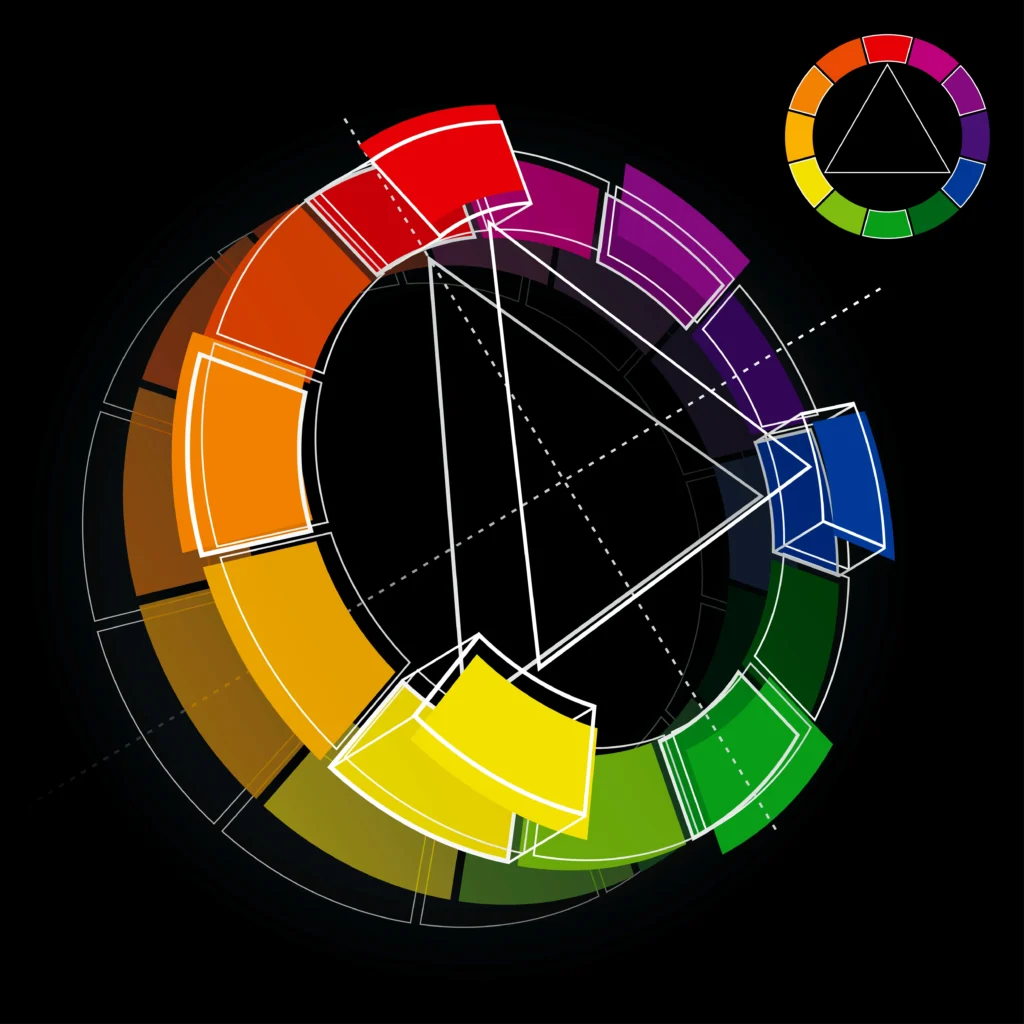
We already know that mauve is a pale reddish violet.
However, knowing how to complement the color properly and what to use with it is another story.
Three color schemes work well with almost any color: monochromatic, complementary, and triadic.
Beyond these, there’s also pairing with neutrals or metallics, which we will get to in later sections.
Monochromatic color schemes are the easiest to understand, using different shades of the same color to add variety and texture to a space.
It works great on interiors, for fashion, and for painting differences in tone.
Monochromatic schemes are also called analogous colors, and for mauve, these include pale pink and lavender-blue.
These are soft, feminine colors that work well with each other.
Other possibilities include electric purple and indigo for a more bold palette.
There are other possibilities as well, which we can explore next.
Complimentary Colors
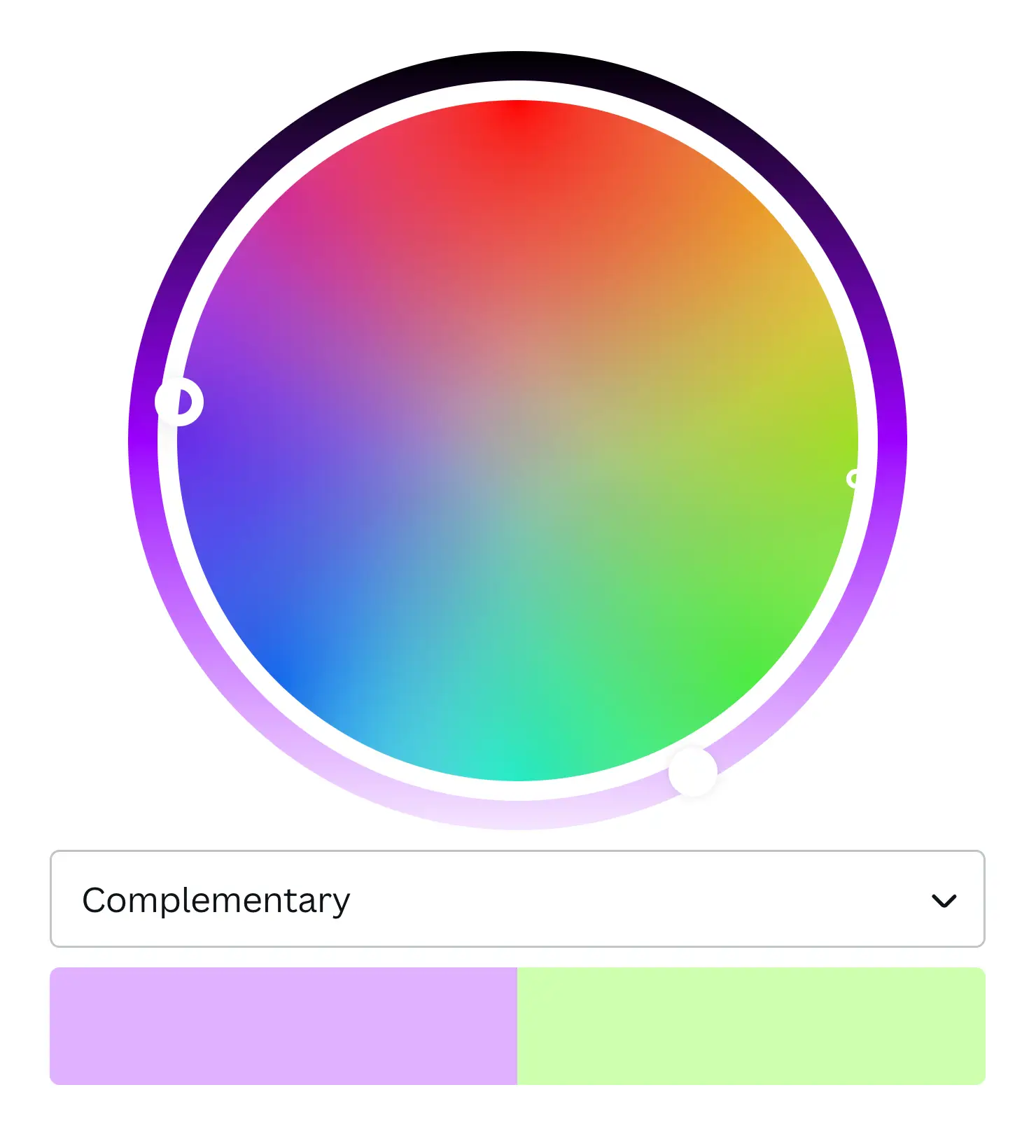
Mauve’s direct complementary color is light yellow-green.
It’s the direct opposite on the color wheel.
Sometimes this color is called tea green, associated with color of matcha.
The yellow adds extra brightness and zest to the green, making it stand out.
The combination of mauve and yellow-green is eye-catching due to their direct contrast.
They each dramatically shift your perspective from the other, allowing you to move back and forth between the two distinct colors.
Other options for complementary colors include mauve’s split complements.
These are the colors directly adjacent to their true complement on the color wheel.
These are pale yellow and mint green.
Together, the three complements can really contrast with mauve and make the color pop.
Contrasting Colors
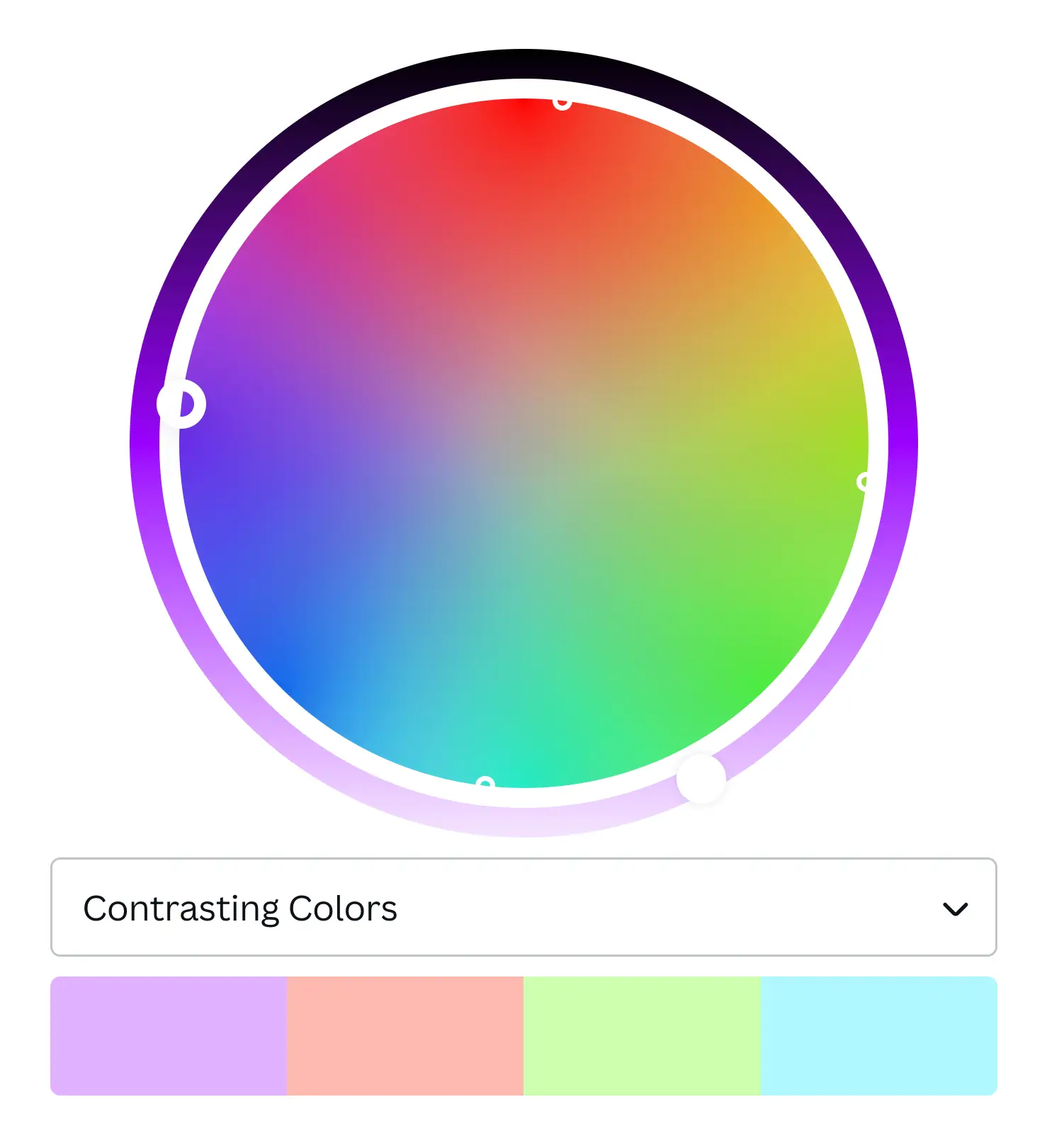
A further option for contrast with mauve is its triadic color scheme.
This is where you take the primary color as the first point on an equilateral triangle on the color wheel and select the colors that correspond to the other two points of the triangle.
For mauve, its triadic colors are seafoam green and pale orange.
These three pastels combined form a great sense of harmony.
Other contrasting color combinations are possible, but complementary colors and triadic colors are the main ones.
You can experiment with going with bold saturation for one of the colors and pale saturation for the other to amplify the contrast even further.
Is Mauve Color a Warm or Cool Color
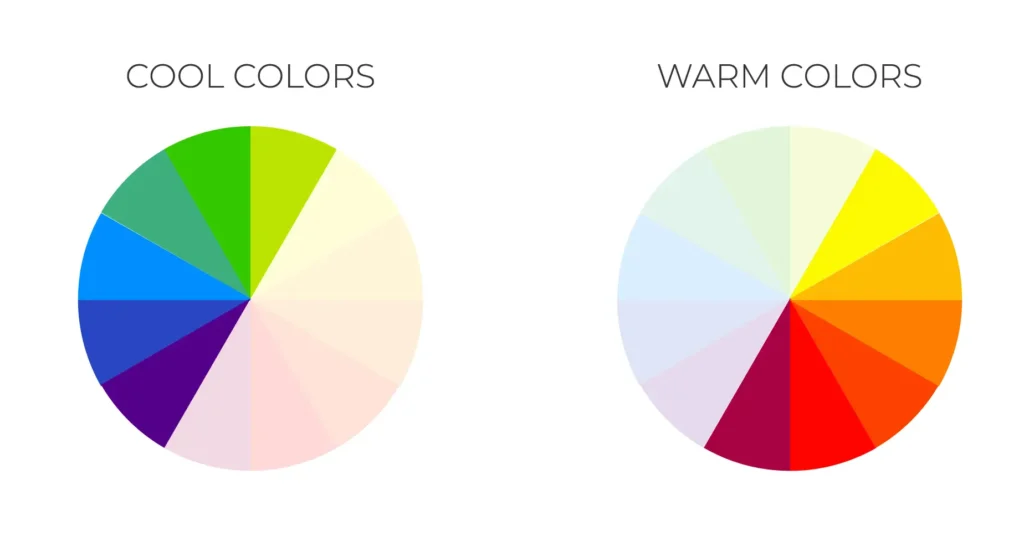
Mauve is actually quite a neutral color in terms of warmth.
Purples, in general, tend to toe the line between warm and cool depending on the red and blue used.
Although mauve tends towards redder, it is still close enough within the violet range to remain a neutral color, with minor variations tipping it either to warm or cool.
Warm colors tend to have more red in them, while blue colors have more blue.
However, it isn’t as easy as just as yellow can also play quite a role in the warmth of color.
Mauve Color Shades

Mauve is a pale form of violet, a little more grey-toned.
Some people see mauve as a reddish or pinkish purple.
Compared to magenta, mauve is more grey and blue.
Compared to purple, it is more pink and white.
On the color wheel, it sits between violet and mauve pink.
This makes shades of mauve definable in relation to this spot on the color wheel and moving outward from there.
There are lots of shades of mauve situated around the color on the color wheel, ranging from purples and pinks to more specific colors like heather and dusty mauve.
One of the two strips of colors besides mauve is pink mauves, which are slightly more pinkish than mauve itself.
The other side has violet, which is bluer.
Pink mauve is a muted purple pink with magenta undertones, while a taupe is a much more blue and grey version of a mauve.
Pink Mauve Color
| Color Name | Hex Code | RGB Code | CMYK Code |
| Pink Mauve | #c77398 | 199, 115, 152 | 0, 42, 24, 22 |
A more fun, fuchsia-styled mauve, it’s a saturated color that evokes a great feminine creative spirit.
It pairs great with dark grey or black.
Dark Mauve
| Color Name | Hex Code | RGB Code | CMYK Code |
| Dark Mauve | #874c62 | 135, 76, 98 | 0, 44, 27, 47 |
Dark mauve saturates and darkens the original mauve color, being a less pale violet.
Light Mauve
| Color Name | Hex Code | RGB Code | CMYK Code |
| Light Mauve | #c292a1 | 194, 146, 161 | 0, 25, 17, 24 |
Light mauve is high brightness and low saturation version of mauve.
Taking mauve and adding more white, the color is quite pale and pastel.
Heather Mauve Color
| Color Name | Hex Code | RGB Code | CMYK Code |
| Heather Mauve | #a6aac7 | 166, 170, 199 | 17, 15, 0, 22 |
Heather mauve is a burgundy styled mauve, closer to a dark mauve pink.
It’s a popular color in fashion and has its own distinct look and feel.
Pale Mauve Color
| Color Name | Hex Code | RGB Code | CMYK Code |
| Pale Mauve | #c6a4a4 | 198, 164, 164 | 0, 17, 17, 22 |
Pale mauve is a softer, more subdued mauve with a magenta undertone.
It’s great as a paint color for a bedroom due to its subtlety.
Dusty Mauve Color
| Color Name | Hex Code | RGB Code | CMYK Code |
| Dusty Mauve | #c0afc5 | 192, 175, 197 | 3, 11, 0, 23 |
Dusty mauve is similar to heather mauve in its deep, rusty red coloration with a dark brown undertone.
It’s a great nostalgic color, looking like a great many antiques.
Mauve Color Combinations
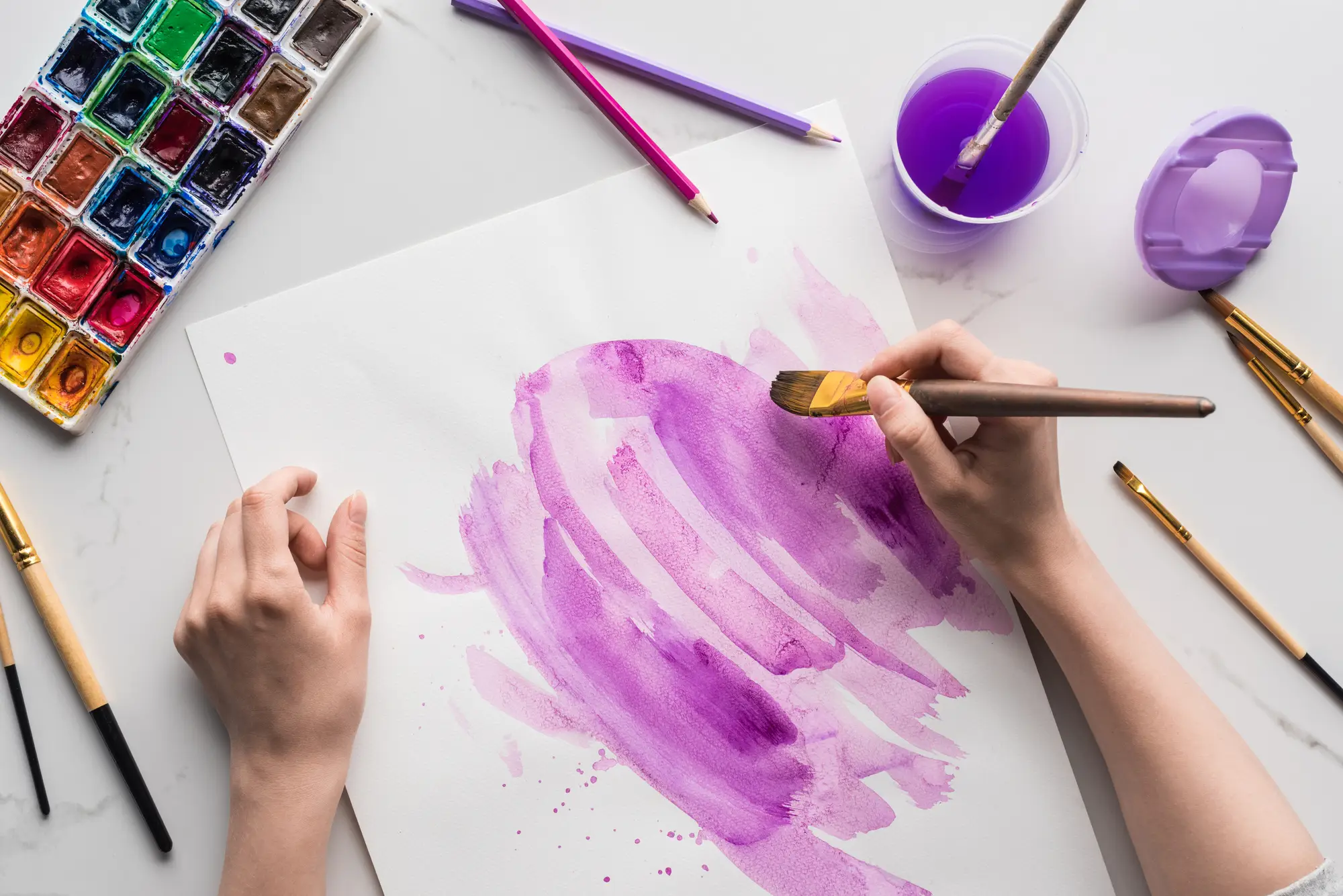
Mauve works great with a wide variety of different colors, depending on the color scheme.
Pink, lilac, and lavender all make stunning choices in a monochromatic color scheme, as they are within a similar violet range as mauve but bring their own sense of texture.
Almost any other purple will also work.
If you’d like to get more creative, you can try its complement, yellow-green.
This matcha-like color contrasts with mauve perfectly, and the two together make for a beautifully calming effect.
Finally, you can go for a triadic color combination: seafoam green and pale orange for mauve.
The three of these colors together make a rich, harmonious combination that works great in balance with one another.
Other color combinations have to do with neutrals, metallics, and black and white.
The most common combination with these is black and mauve.
Anything from charcoal to a deep black works wonderfully with mauve, creating a deep and melancholy sense of emotion.
Grey and mauve make for a sophisticated and elegant combination, used commonly at weddings.
This works well with gold and mauve, making for a royal combination.
How to Make Mauve Color Paint
Making a mauve paint with acrylics is not very difficult.
You just need a few colors to start with and then mix them together on your palette.
- First, start with equal portions of grape purple, dark brown, and white paint on your palette.
- Then, mix these three colors together.
- If the result is too dark and muddy, add more white and purple.
- If it is too pale, add more brown.
- Finally, if it is too low saturation, add more grape purple.
How is Mauve Different than Other Common Colors
Mauve Color vs Pink
| Color Name | Hex Code | RGB Code | CMYK Code |
| Mauve | #e0b0ff | 224, 176, 255 | 12, 31, 0, 0 |
| Pink | #ffc0cb | 255, 192, 203 | 0, 25, 20, 0 |
Pink is a red mixed with white.
True pink is easy to create as it simply involves equal parts red and white.
Mauve Color vs Lilac
| Color Name | Hex Code | RGB Code | CMYK Code |
| Mauve | #e0b0ff | 224, 176, 255 | 12, 31, 0, 0 |
| Lilac | #c8a2c8 | 200, 162, 200 | 0, 19, 0, 22 |
Lilac is quite a pale color, and just slightly less red than mauve.
It is one of the closest colors on our list to mauve.
Mauve Color vs Lavender Color
| Color Name | Hex Code | RGB Code | CMYK Code |
| Mauve | #e0b0ff | 224, 176, 255 | 12, 31, 0, 0 |
| Lavender | #e6e6fa | 230, 230, 250 | 8, 8, 0, 2 |
Lavender is a more saturated, less bright lilac.
Otherwise, it shares lilac’s less red quality than mauve but is otherwise quite a similar color.
Mauve Color vs Rose Gold
| Color Name | Hex Code | RGB Code | CMYK Code |
| Mauve | #e0b0ff | 224, 176, 255 | 12, 31, 0, 0 |
| Rose Gold | #b76e79 | 183, 110, 121 | 0, 40, 34, 28 |
Rose gold is a darker, dustier mauve.
It looks like a deep lipstick shade, veering closer to skin color than mauve, meaning more pinkish and pale.
Mauve Color vs Purple
| Color Name | Hex Code | RGB Code | CMYK Code |
| Mauve | #e0b0ff | 224, 176, 255 | 12, 31, 0, 0 |
| Purple | #800080 | 128, 0, 128 | 0, 100, 0, 50 |
Purple is a more true purple than mauve, meaning it is less red and pale.
Mauve Color vs Dusty Rose
| Color Name | Hex Code | RGB Code | CMYK Code |
| Mauve | #e0b0ff | 224, 176, 255 | 12, 31, 0, 0 |
| Dusty Rose | #b77b82 | 183, 123, 130 | 0, 33, 29, 28 |
Dusty rose is similarly skin-colored as rose gold, but slightly more pale.
The color is more pinkish and pale than mauve, losing some of its violet properties.
Mauve Color vs Taupe
| Color Name | Hex Code | RGB Code | CMYK Code |
| Mauve | #e0b0ff | 224, 176, 255 | 12, 31, 0, 0 |
| Taupe | #483c32 | 72, 60, 50 | 0, 17, 31, 72 |
Taupe is quite a bit more grey and brown than mauve, as if the color got very desaturated.
Mauve Color in Fashion
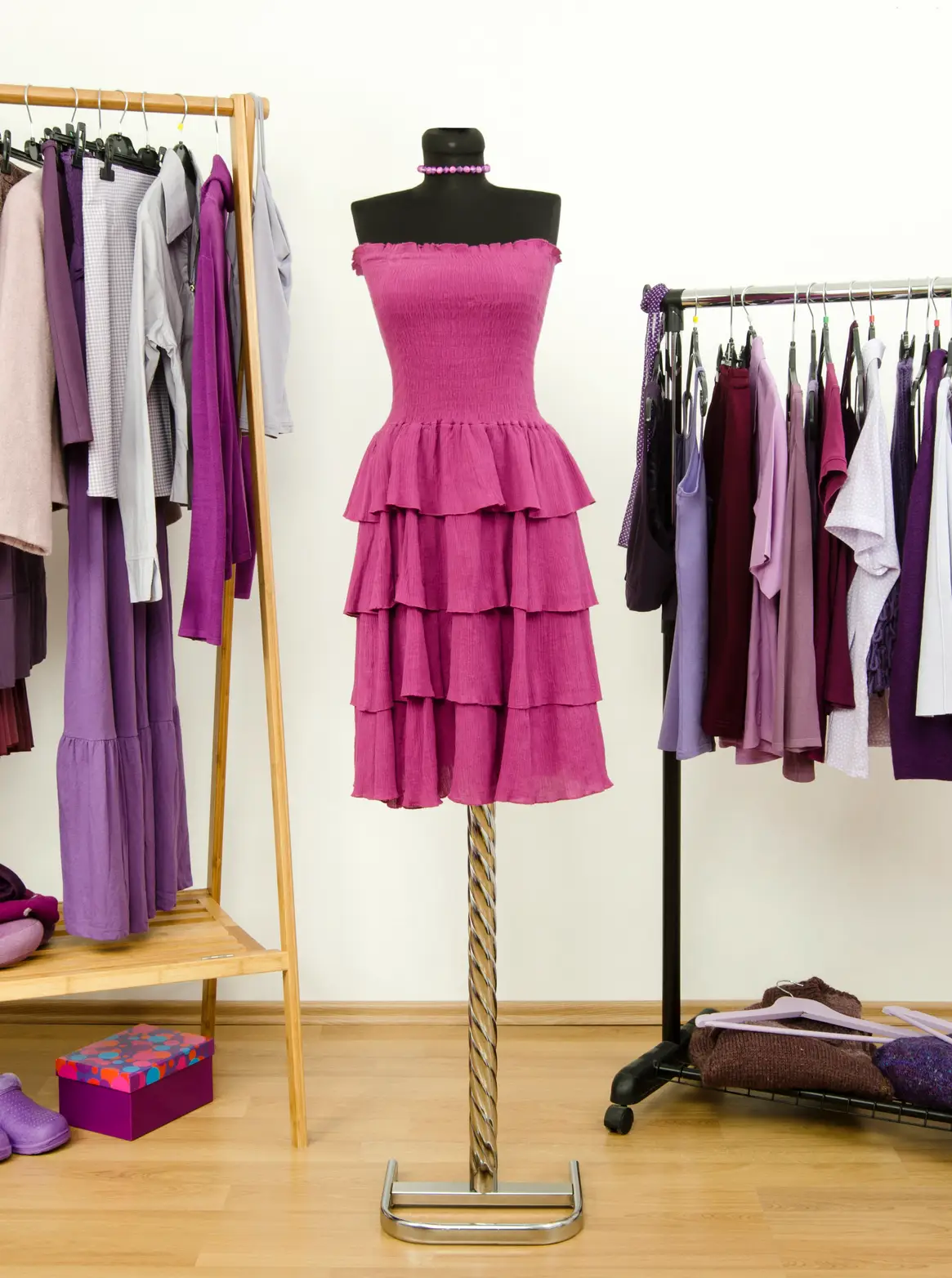
Mauve is a very popular color in fashion.
It’s a common choice for bridesmaids’ dresses, outwear, and many other clothing and accessories.
Mauve sweaters and tops can look very elegant and sophisticated but look neutral without good complementary pieces.
Mauve often looks best with cotton, wool, cashmere, and satin fabrics. It doesn’t look as good for polyester blends.
Pieces like dresses, a statement pair of pants, or a bold piece of outerwear also make for an effortlessly chic use of mauve.
Nudes are a fantastic choice of compliment with mauve for making an outfit, as are dark browns.
The natural look always works, so beige or camel are also great choices. You can pair a mauve pant or shirt with nude shoes, bags, or jewelry.
Metallics are a second great choice of pairing.
Gold with mauve makes for a great pair that’s easy to wear.
If you are pairing your mauve with black or white as your neutral, silver accessories also work.
Mauve works particularly great with monochromatic color schemes in today’s fashion.
That means pairing it with more purples to give it a variety of textures.
Conclusion
Mauve has a rich and interesting history that’s been making a comeback, especially in fashion.
You can also use a mauve color in interior design and painting.
As the first synthetic color to gain huge popularity, it revolutionized the fashion industry and stuck in the hearts and minds as representative of an important cultural moment.
Today, we can just enjoy the rich beauty of the color or appreciate it on multiple levels.
Mauve Color FAQ
What color is mauve?
Mauve is a pale reddish violet, sitting between purple and red on the color wheel. Named after the French name for the mallow flower, it has a rich history of subverting previous centuries’ rare royal purple dye in the late 19th century.
Is mauve more purple or pink?
Mauve sits between purple and pink, being a pale shade of violet leaning towards red. The pink comes from its lower saturation, leaning it towards a more pale, lighter color.
What does mauve color mean?
Mauve represents decadence, femininity, and playfulness. Many purples are associated with the purity and faith of religion but can also have a sense of moodiness. Mauve’s brightness also brings to mind spring and can be seen as the color of hopeless romantics.

